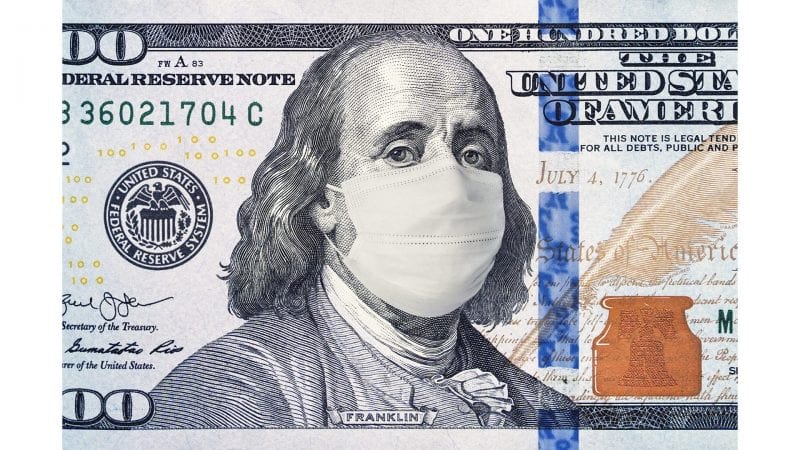Confused About How to Use PPP Funds? Here Are Some Answers
Little Guidance on Loan Forgiveness
By Scott Foster
The Paycheck Protection Program (PPP), part of the CARES Act, was launched just over a month ago to much fanfare and promise, but has been bogged down since with technical malfunctions, overwhelmed bankers, political missteps, and incomplete guidance from the U.S. Small Business Administration (SBA). Current guidance on the forgiveness of these loans is scant, additional guidance has been recently posted, and more is expected in the near future. The SBA’s FAQs for PPP have been updated several times a week since they were originally published on April 3, reflecting the current thinking of the SBA in interpreting the CARES Act.
Many businesses have already received their PPP loan proceeds and are wondering: how should I use these funds? How do I document that use? Will all of my PPP loan be forgiven? Unfortunately, until the SBA issues complete guidance — or Congress amends the CARES Act, which is quite likely — we are all in a bit of limbo, but let’s start with what we know today.

“Unfortunately, until the SBA issues complete guidance — or Congress amends the CARES Act, which is quite likely — we are all in a bit of limbo.”
What is the covered period? The eight-week period starts on the day your PPP loan was disbursed/funded. Therefore, if your loan was funded on April 15, your covered period should be from April 15 to June 9. Only expenses that are related to the covered period are potentially forgivable.
What expenses are forgivable? First category: payroll expenses, including health insurance and retirement expenses, subject to a cap of $100,000 per year for salary per person. This translates into a $15,384 cap on forgivable compensation. Self-employment income is included in payroll expenses, but the amount that can be forgiven is 8/52nd of that individual’s self-employment income for 2019. Second category: rent (or interest payments on your mortgage) and utilities. But the forgivable amounts in this category cannot exceed 25% of the total amount to be forgiven (said another way, these expenses cannot be greater than one-third of your payroll expenses). Therefore, incurring payroll expenses during the covered period is critical to receiving any loan forgiveness.
If I have $100,000 in forgivable expenses, but I have fewer employees on payroll, does that matter? Yes. The CARES Act provides that any forgiveness is reduced proportionately to the extent your full-time equivalent employees (FTEs) during the covered period are fewer than the FTEs your business had either at the start of 2020 or early 2019. However, the CARES Act also provides that, if you rehire any employee laid off between Feb. 15 and April 26 by June 30, that employee then counts as a FTE during the covered period (but this won’t increase the amount of your potential forgiveness, since the forgiveness is based on your actual payroll expenses in the covered period).
I laid off several employees, but now that I have the PPP loan, I’m ready to hire them back. However, they are making more on unemployment (with the $600-per-week temporary federal bonus) than I can pay them. Now what? There are a bunch of interrelated issues here, but the bottom line is this: as long as you offer the employee their job back, then they should no longer qualify for unemployment, and the SBA has indicated that, if the employee doesn’t return after you offer them their old job, that won’t count against you for the FTE test. This is one issue that members of Congress have cited in a push to amend the CARES Act to extend the covered period for certain impacted businesses, so there is a chance we will see an amendment that would, for example, extend the covered period to 16 weeks.
What documentation will I need to provide to get forgiveness? At a minimum, you can expect to need to provide the same information you provided to obtain the loan: payroll records (ideally a report from your payroll provider), proof of rent payments, utility bills, and a copy of your lease. You will also need to document the number of FTEs you have during the covered period and compare that to the number of FTEs that you had in either the 2019 or 2020 testing period.
Should I put the PPP loan proceeds in a separate account? Ideally, yes. This is a recommended best practice. You will need to show that you used these funds for their intended use. If the funds are co-mingled with other funds, that might make it more difficult to demonstrate how the PPP funds were used.
We are an essential business and have not felt any significant negative effects yet. Can we still use the PPP loan funds? This is one of the murkiest areas, and we need further guidance from the SBA, especially in light of recent unhelpful comments from U.S. Sen. Ron Johnson and Treasury Secretary Steven Mnuchin. On one hand, every business is America is facing some degree of uncertainty, even if you are up and running. What happens if one of your employees get sick? Or if a major customer shuts down? Or a supplier is unable to meet your needs? On the other hand, if you truly are not feeling any impact, then was the certification you made on the application (“current economic uncertainty makes this loan request necessary to support the ongoing operations”) really accurate?
We are recommending that you document the uncertainty your business is facing, even if the uncertainty never comes to pass, along with any steps you are taking and costs you are incurring to mitigate the risks. For example, did you increase pay to your employees during the state of emergency? Have costs associated with cleaning or sanitizing your facility increased? You may also want to document what you would have done had the PPP loan not been available. For example, would you have reduced hours or furloughed employees in anticipation of decreased income?
My business is currently closed due to the governor’s order. What should I do? The only way to have any portion of your loan forgiven is to spend the proceeds on payroll. You either need to try to hire back your employees (maybe to only lay them off again at the end of the covered period) or pay back the unforgiven portion of the loan (which is accruing interest at the rate of 1% on any amount not forgiven). Currently, there is no way to use the PPP loan proceeds after the covered period and have those expenses forgiven.
Scott Foster is a partner at Bulkley Richardson.

